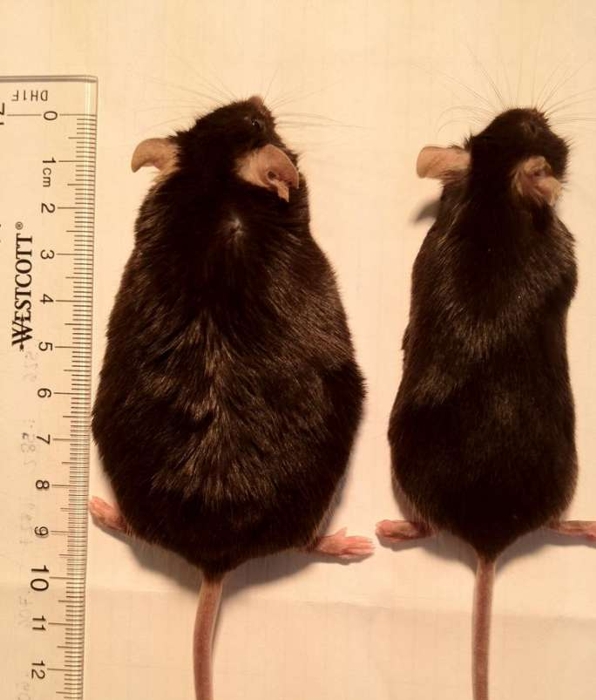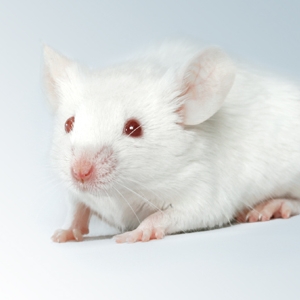Scientists have tracked down an enzyme that controls the deposition of body fat in mammals. That may sound like good news to folks who want to lose some weight. But there’s more to the situation than meets the eye. Or plate. And researchers say the discovery may be a two-edged sword…
 Like the experimental mouse on the right, NAMPT-deleted specimens did not
Like the experimental mouse on the right, NAMPT-deleted specimens did not
– in fact were rendered incapable of – gaining weight. But playing
with the NAMPT system is not that simple…
Mouse studies by researchers at the University of Copenhagen Faculty of Health and Medical Sciences say stopping the deposition of body fat in mammals – from mice to humans – is as simple as shutting off a certain enzyme that circulates in our blood, in greater or lesser amounts, all the time.
Called NAMPT, the enzyme is responsible for controlling a number of bodily functions, and that’s why shutting it off is not as simple as solution to obesity as it first appears. But let’s start with a look at what it does…
What they did…
Researchers genetically deleted the enzyme NAMPT in the fat tissue of mice, and this rendered the animals completely resistant to becoming overweight or obese, even on a very fatty diet.
“We gave the mice a diet that more or less corresponds to continuously eating burgers and pizza. Still, it was impossible for them to expand their fat tissue. Our ultimate goal is that by understanding these fundamental underpinnings of how we become obese, we can apply our finding to the development of novel treatment strategies for metabolic disease,” says Karen Nørgaard Nielsen, Lead Author on the publication and a PhD. student at the Novo Nordisk Foundation Center for Basic Metabolic Research.
But there’s a catch…
“NAMPT appears to increase the metabolic functionality of almost every tissue in the body in which it has been studied. For example, there are indications that the liver and skeletal muscle may benefit from increased NAMPT activity. We similarly find that NAMPT is critical for fat tissue function. Unfortunately, that function is efficiently storing fat. NAMPT in fat tissue was likely once an extraordinary benefit to our ancestors but in today’s society full of high-fat, calorically-dense foods, it may now pose a liability,” says Associate Professor Zachary Gerhart-Hines from the Novo Nordisk Foundation Center for Basic Metabolic Research and a corresponding author on the study.
My take…
It all comes back to what I’ve said over and over again, and what was recently underlined in another study which concluded that North Americans simply eat too much. Researchers agree that the tendency to become overweight or obese may be traced back to prehistoric times, when our hunter-gatherer ancestors did not have as high-calorie foods as we do, and certainly did not have as reliable supply of food. They had to eat as much food as they could get their hands on at any given time, because they might not have any food tomorrow. The more efficient your body was at storing excess calories as fat, which could be called on to fuel your body in times of food shortage, the more likely you were to survive. Simple as that.
I agree with the researchers that much more study on the regulation of NAMPT must be done before manipulation of the enzyme can be considered an option for human weight control.
~ Maggie J.

